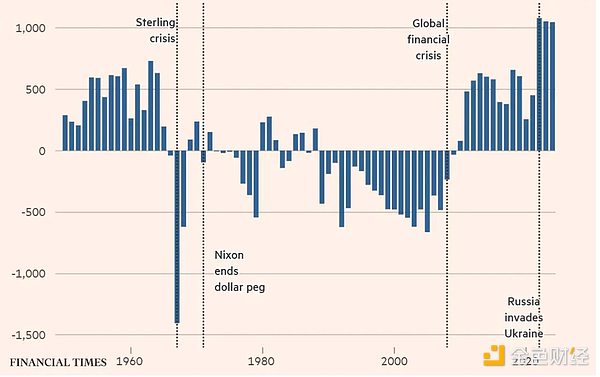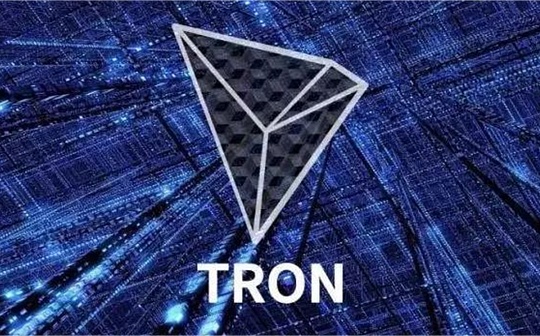Bitwise: What exactly is fiat currency and why people buy gold and BTC

転載元: jinse
06/18/2025·5DAuthor: Matt Hougan, Chief Investment Officer of Bitwise; Translated by: AIMan@Golden Finance
The world began to realize the madness of fiat currency experiments.
Legendary writer David Foster Wallace's graduation speech at Kenyon College in 2005 opened with a fable:
Two little fish were swimming and happened to meet a big fish swimming opposite. The big fish nodded to them and said, "Good morning, children. How about the water?" The two little fish swam for a while, and finally one of them looked at the other and asked, "What is water?"
Wallace's view is that we often turn a blind eye to the most important reality, especially when these reality has surrounded our entire life.
I've been thinking about those fish lately.
Like almost all other financial professionals today, I have lived my whole life in a fiat-based world where a country’s money supply is not based on its accumulation of reserves such as gold or silver, but is determined by the government. The United States gave up the gold standard 54 years ago, in 1971. Assuming that most people start their careers at the age of 21, the youngest person in the financial world who remembers working in the era of illegal currency may be 75 years old.
When most of us are still in school, the adoption of fiat currency is seen as an inevitable progress, like climbing out of the mud and starting to walk upright.
In the past, people thought gold was the currency, so we laughed. So cute.
But people seem to be increasingly aware that the fiat currency era we are experiencing may be an exception. Perhaps printing money out of thin air, like we started in 1971 is actually a crazy idea. Perhaps sound currency needs restrictions.
In other words, people began to look around and ask: What exactly is fiat currency?
One of the groups that raised this question was August's Financial Times, whose newspaper's "Big Read" last weekend was an article delving into how gold became a safe haven for the world to be immune to uncertainty.
One of the key words:
To the guardians of the global economy, gold — which has been used as a store of value since Mesopotamia made its first bar thousands of years ago — seems destined to become irrelevant.
However, gold bars have returned strongly, not only favored by speculators who do not trust modern paper money and the so-called "golden bugs", but also by the most conservative investors in the world...
In an era of political fanaticism, many of the core assumptions about the global economy have been questioned, and gold has once again become a pillar.
The Financial Times pointed out that central banks - who often bought gold before 1971 - are now starting to buy gold in large quantities again. As shown in the figure below, these annual purchases began after the 2008 financial crisis and entered a phase of hypergrowth following the Russian invasion of Ukraine in 2020. In other words, these purchases begin when central banks begin to truly abuse fiat currency, and once governments start seizing some fiat currency, the purchase speed will be accelerated.
Central banks are investing record funds to buy gold
Net purchases/sales volume of central bank (tonns of gold bars)

Source: Financial Times, data from Metals Focus, Refinitiv GFMS and World Gold Council.
Note: The chart shows net demand (i.e. total purchase minus total sales) from central banks and other official institutions (including supranational entities such as the International Monetary Fund). Excluding the impact of swaps and Delta hedging.
Last year, gold surpassed the euro, becoming the world's second largest reserve asset after the US dollar. As U.S. debt approaches $37 trillion and the temptation to depreciate the dollar to get out of trouble grows, central bank governors realize they need to hedge risks. They want a kind that can:
-
Scarcity
-
Global
-
The government is difficult to manipulate
-
Can be held directly in an autonomous and sovereign manner.
You probably understand what I mean. These qualities are not only suitable for gold.
They are increasingly paying attention to Bitcoin.
Bitcoin: A powerful tool to fight the depreciation of fiat currency
Like the government, individual investors are beginning to realize the danger of printing money recklessly. But interestingly, they mostly hedge money through Bitcoin – a digital alternative to gold. Since its launch in January 2024, Bitcoin ETFs have attracted $45 billion in funds, compared with $34 billion in funds for the same period.
Why are there differences between the government and the ordinary people? The main reason is capacity: the Bitcoin market is as large as $2 trillion, which is still too small for central bank officials, and its liquidity is not enough to support the central bank's large-scale inflows and outflows. I suspect this will change over time—in fact, the government’s demand for bitcoin will only continue to grow. But for now, I think these are two aspects of the same deal.
However, whether we are talking about gold or Bitcoin, the basic point is the same: over the past four decades, we have been taught to diversify our portfolio through a combination of stocks and bonds. But no matter how you adjust – 60% stocks, 40% bonds, or 70%/30, no matter what proportion – you still invest 100% in fiat currency.
People realize that swimming in these waters is quite dangerous.



